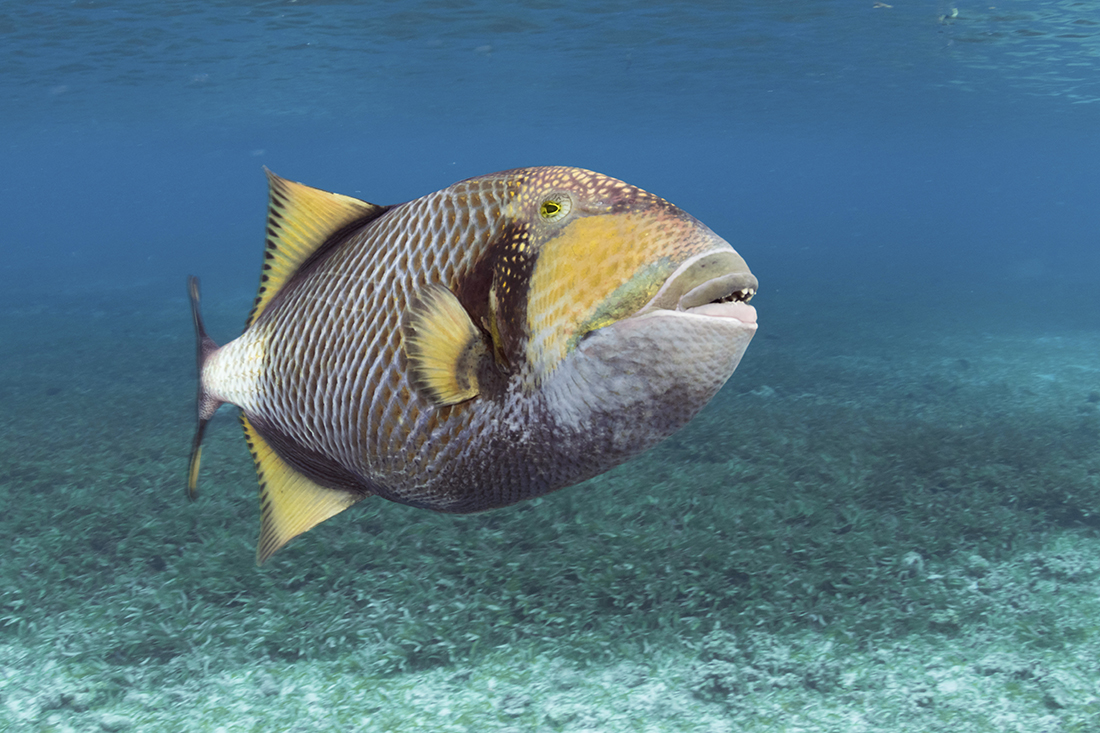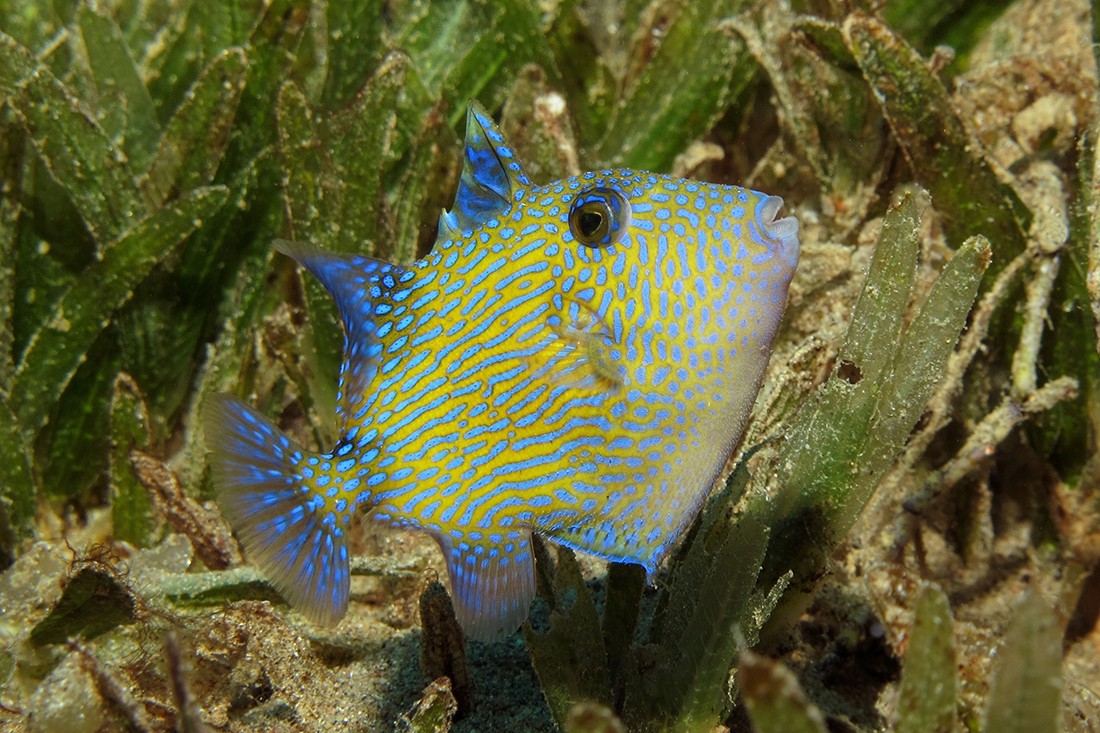Triggerfish Happy
Protective parenting
Family life begins when a male stakes out a likely site for spawning. He will begin excavating a shallow crater into the sand or rubble, and may not stop with one, as certain species will keep harems. Whether monogamy or polygamy is the intention, the male knows enough to involve potential mates in the home building process. Pre-spawning courtship often begins with the male and female touching fins and bumping bellies. If all seems right, they will then join forces to move rubble about and blow water jets to shape the nest. Once everything is in order on the home front, and the spawning is consummated, the female will deposit tens of thousands of tiny fertilized eggs in the nest. She will remain in close proximity until they hatch into larvae, often rolling, fanning, and blowing water on the eggs to provide oxygen to the embryos.

Males such as this Titan triggerfish, the largest of the species, tend to roam further from the nest to provide the first line of defense from anything that would threaten the eggs, including divers and snorkelers. Photo by Walt Stearns
Momma triggers are fiercely protective of the little ones and will chase away any would-be egg munchers. The males also stand guard but tend to roam a bit farther away from the nest, providing the first line of defense, and in cases of multiple mates protecting all his progeny. This protective approach to child-rearing has earned triggers a well-deserved reputation for aggressive behavior

Juveniles like this young Blue triggerfish are typically found inshore in the seagrass or sandy reef patches. Photo by Wakatobi Resort
A nest guarder will not hesitate to run off anything that enters its territory—including divers and snorkelers. And thanks to their shell-crunching teeth, a trigger could actually take a fairly nasty nip out of an arm or leg. More often, they go after a diver’s fins and will stay on the attack until the human intruder retreats. When confronted by a belligerent triggerfish, it helps to know that their territorial defense zone extends upward from the nest like an inverted cone. As a result, swimming away rather than upward is the best retreat strategy.
Close relations to triggerfish
If you spot a fish that looks a bit like a trigger but with subtle differences, it is likely to be a filefish. These close relatives share the same rhomboid-shaped bodies and often show similarly elaborate and cryptic body art. Filefish have the same protected gills and locking spike adaptation of the dorsal and anal fins, but otherwise have softer, simple fins and truncated, fan-shaped tail fins. They sport scales, but these may be so tiny as to appear more like tough skin. Filefish can sometimes be more solitary than triggerfish, either swimming alone or in pairs. Filefish diets can include everything from invertebrates such as tunicates, gorgonians, and hydrozoans to corals and seaweeds. They are most common on the upper portions of the reef, but may also venture into grass beds and estuaries. One particular favorite at Wakatobi is the Scrawled filefish, which can grow to lengths of more than a meter.

The Scrawled filefish, also known as the Broomtail filefish, is found often in the upper portions of the reef as well as in the grass beds of Wakatobi’s protected marine preserve. Photo by Walt Stearns
Because of their bright coloration, many species of triggerfish and filefish are prized for the aquarium trade. The high prices these fish command has tempted collectors to gather even threatened species from the wild. Researchers are working to raise triggerfish in captivity to reduce the pressure on wild populations, but until that happens, the best protection for these colorful animals is the safe haven found in protected marine preserves such as at Wakatobi.
Ready to see and learn more? Contact our office at office@wakatobi.com or complete a quick trip inquiry at wakatobi.com.
Why not plan a resort and liveaboard trip for the best of Wakatobi? Learn about Pelagian dive yacht here.
Visit us on Facebook and Instagram.


